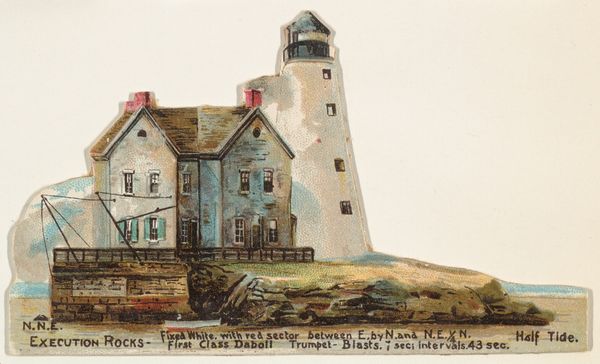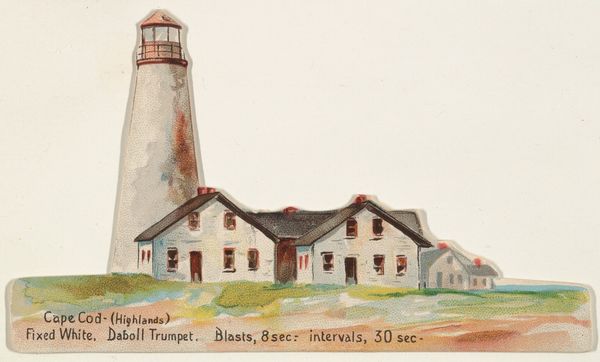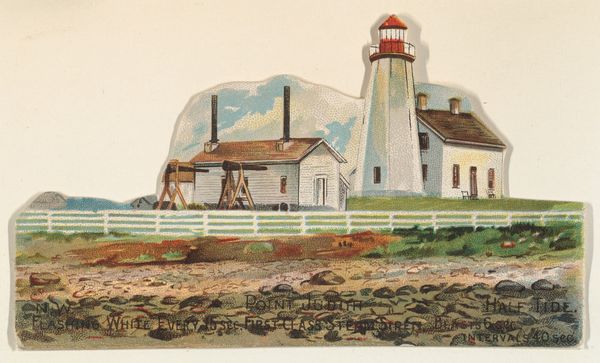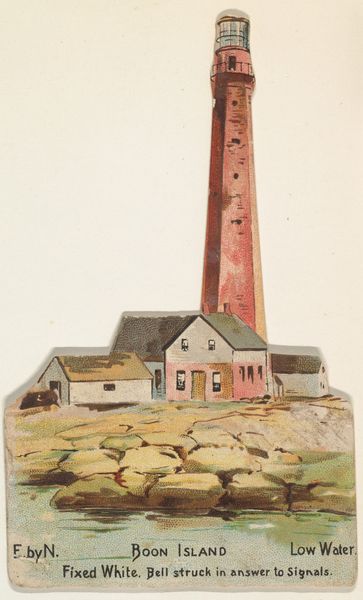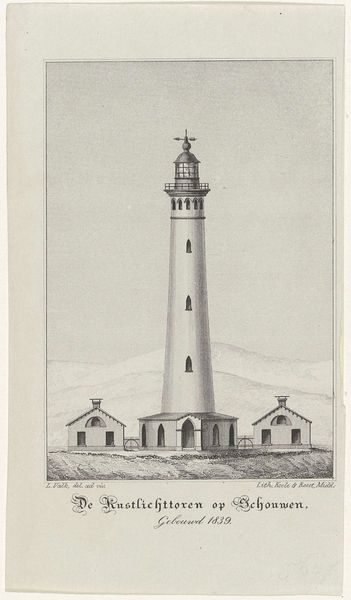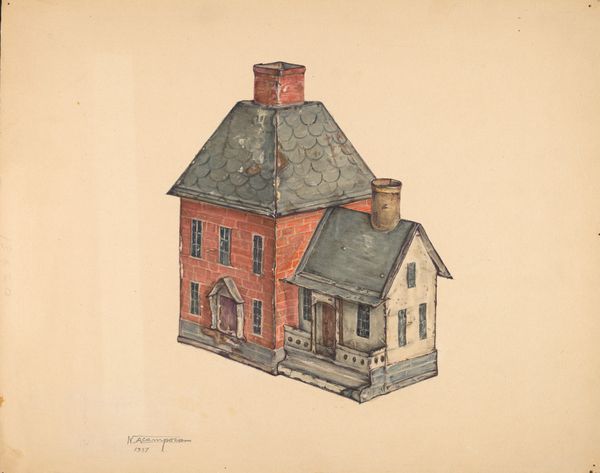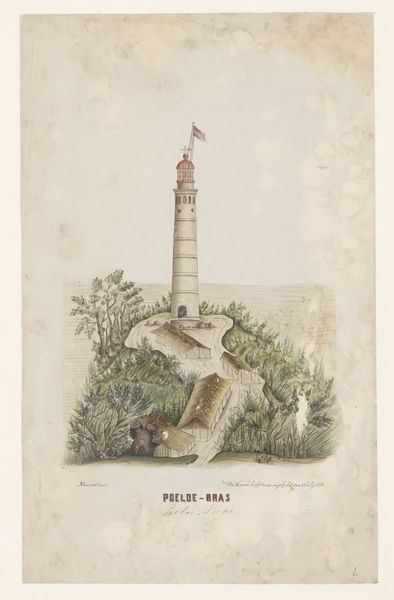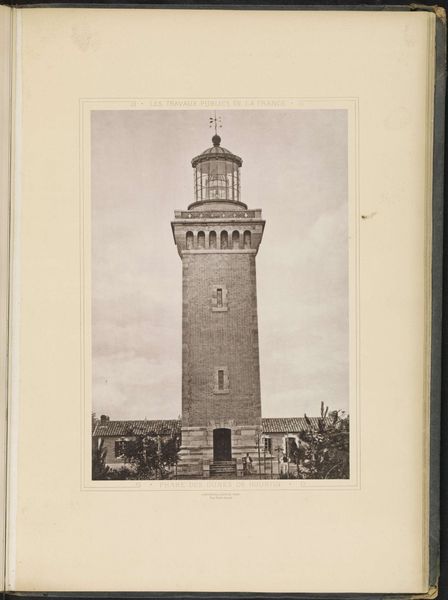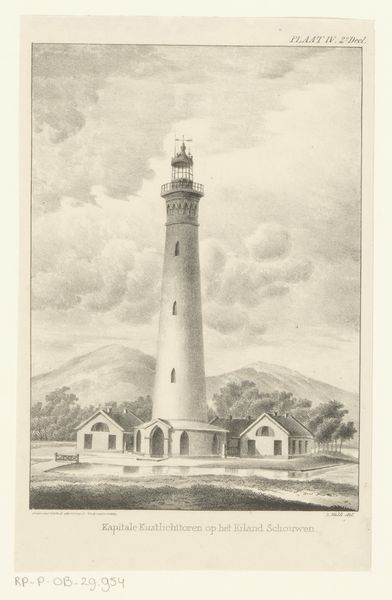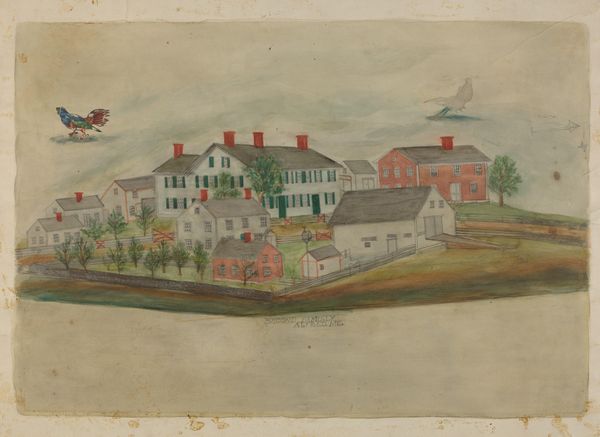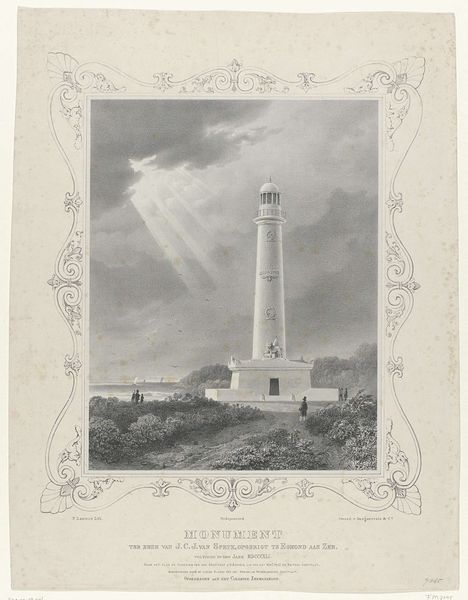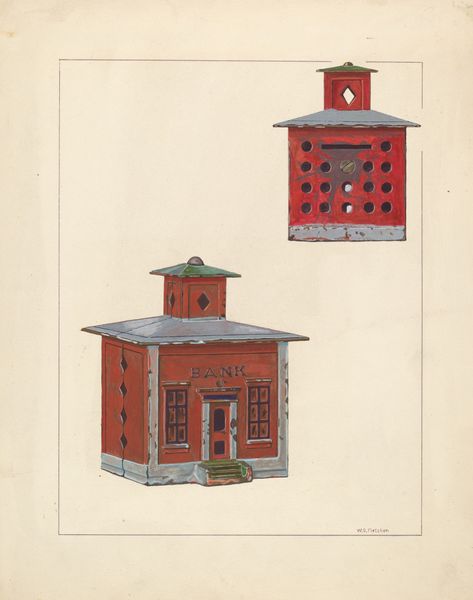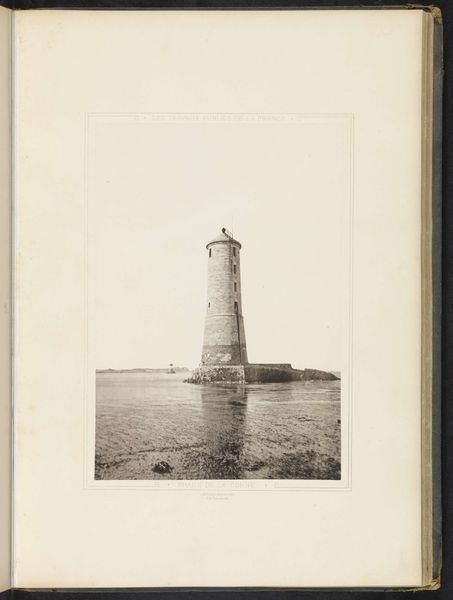
Stepping Stones, from the Lighthouses series (N119) issued by Duke Sons & Co. to promote Honest Long Cut Tobacco 1889
0:00
0:00
drawing, print
#
drawing
# print
#
landscape
Dimensions: Sheet (Irregular): 2 5/16 × 4 1/16 in. (5.8 × 10.3 cm)
Copyright: Public Domain
Curator: Ah, yes. Here we have "Stepping Stones, from the Lighthouses series (N119) issued by Duke Sons & Co. to promote Honest Long Cut Tobacco", created in 1889. A beautiful example of late 19th-century advertising art now in the collection of the Metropolitan Museum. Editor: It feels quite self-contained. The structure of the lighthouse is weighty and resilient but also gives off an atmosphere of solitude and of an odd monumentality despite being a very small printed thing. Curator: Lighthouses, throughout history, have always served as powerful symbols of guidance, safety, and hope, acting as beacons in the darkness. And in terms of psychology, the solid lighthouse foundation represents our grounding, and the illuminated tower symbolizes consciousness illuminating the way. This card, small as it is, continues that potent tradition of visual symbolism. Editor: Right, but this image comes to us courtesy of the W. Duke and Sons tobacco company. So its symbolism of “guidance” feels somewhat warped when used to promote a product directly linked to public health issues. It’s the late 1800s, so these facts are not yet at the forefront, but from our contemporary view, the juxtaposition creates a problematic and ironic message. Is this supposed to symbolize something, such as being honest with long cut tobacco to the common worker, like a shining light toward prosperity and a strong lifestyle, so they do not end up alone, stranded at sea, such as that which the lighthouse protects? Curator: Indeed. Though these cards were very popular at the time, collecting them was almost a cultural craze and also advertised other series that were related to actors, historical figures, and college colors, but in relation to this example of tobacco the lighthouse image creates a continuity between commerce and popular symbolism, even propaganda to the unware. Editor: Yes, so beyond their intended purpose to boost sales, these cards unwittingly capture a moment of burgeoning consumer culture where marketing co-opts profound visual symbols to legitimize its motives. By analyzing these pieces in context, we see the intersection of commerce, ideology, and visual communication – revealing much about the values of society back then as well as here now. Curator: Absolutely. It causes me to also reflect about how we continuously navigate through constructed realities, even to this very day, always deciphering symbolic cues whether we realize it or not. Editor: Agreed. These humble promotional cards offer endless insights into how imagery carries power.
Comments
No comments
Be the first to comment and join the conversation on the ultimate creative platform.
